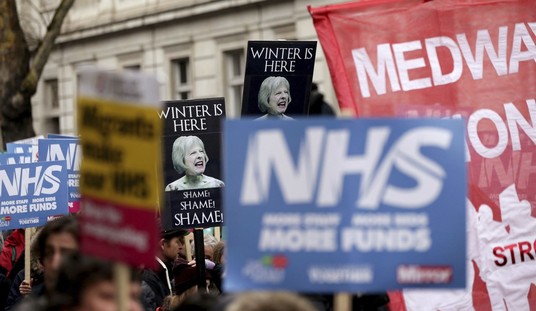Jonathan Capehart has penned an extensive editorial at the WaPo this weekend in which he attempts to draw a direct line from the ill fated encounter between George Zimmerman and Trayvon Martin to the national chants of “black lives matter.” In it, he offers something of a thumbnail version of national racial discussions since the first black president took office. This, of course, includes famous speeches and interviews, along with a listing of black individuals who were killed by white individuals in recent history. (At least the ones which attract all the attention.) It’s the summary of this piece which was, I think, a fine example of the wrong lesson to be learned, but one which is regularly echoed in the media.
A tragically positive legacy of the killing of Trayvon Martin is that it began to open the nation’s eyes. That people of color are not “just making things up” when it comes to the sometimes fatal racism, discrimination and suspicions they face. As a result, the chant of “black lives matter” is not the lament of a disaffected minority but the mantra of a nation awakened to and tired of the injustice and brutality faced by their fellow Americans.
Race relations in this country remain far from perfect, but it occurs to me that far too many of the pundits opining on the subject from Capehart’s side of the fence continue to take a myopic view of a conversation which was supposed to have two sides. This mantra that the author trots out yet again is not a symptom of a solution, but actually part of the underlying problem. For some reason, these cheerleaders for the cause seem to completely fail to understand how patently offensive “Black Lives Matter” is when the correct sentiment should have always been, “All Lives Matter.” (And if anyone requires a refresher course on exactly how far off the rails this discussion has been driven by the race and culture warriors, they need look no further than the sad day when the president of Smith College was actually forced to apologize by an apoplectic mob of social activists for writing “all lives matter” in an email.)
It should go without saying that there are many conflicts which take place between human beings (we tend to be that way by nature) and sometimes they are of different races. But to pretend that the generic “fault” for these conflicts can be placed entirely at the door of one side or the other is either foolish or intentionally disingenuous.
Returning to the lessons learned section of the editorial, however, this was possibly the most jarring part of it.
But the December murder of New York City police officers Wenjian Liu and Rafael Ramos while sitting in their patrol car in Brooklyn added a new dimension to the conversation. For the first time, we heard respected leaders from law enforcement acknowledge the long-held pain of African Americans and their mistrust of the police as a way to build a bridge to greater understanding.
When “Meet The Press” moderator Chuck Todd asked New York City Police Commissioner William Bratton in December if he acknowledged the rift between between blacks and the police, Bratton was clear. “Oh, certainly,” he said. “I interact quite frequently with African Americans from all classes, from the rich to the poor. And there’s not a single one that has not expressed this concern, that their perception is the reality that we have to deal with.”
Apparently the lesson we were supposed to take away from the assassinations of Officers Liu and Ramos (according to our social betters) was that their sacrifice was not in vain if it got people talking about bad cops. That’s not just offensive, but completely backwards thinking. What the nation learned in large part that day was the sad fact that there remains a growing underbelly in some of these “movements” which sees violence as an answer to complaints, seeks to undermine the social contract which allows us to survive in a free society and a complete disregard for the rule of law. Police are being hunted in some areas, and when that blue barrier breaks down, there is nothing left but chaos.
But the disdain for police which is on display is better illustrated when Capehart cites “[t]he reprehensible reaction by law enforcement to the protests in Ferguson last summer.” Perhaps this is the perfect opportunity to point out that many of us watched those exact same events play out on our television screens and saw something quite different. The author is apparently able to dismiss and indict the reactions of the police with a straight face while utterly failing to note that the cops in Ferguson and surrounding areas were not dealing with peaceful protesters for much of that time. They were faced with masses of marchers, frequently armed, who were flipping over cop cars, serial looting businesses and committing dozens of acts of arson in a single night. It’s rather hard to have a civil conversation in a community policing environment when the “community leaders” who you are up against are leading off their chants with “Burn This Bitch Down.”
There are probably some lessons to be taken away from the incidents surrounding Trayvon Martin, Michael Brown and all the others listed in Capehart’s article, but it’s not the one he invokes. Perhaps a better starting place would have been to say that a discussion, by definition requires the engagement of two equal partners.








Join the conversation as a VIP Member